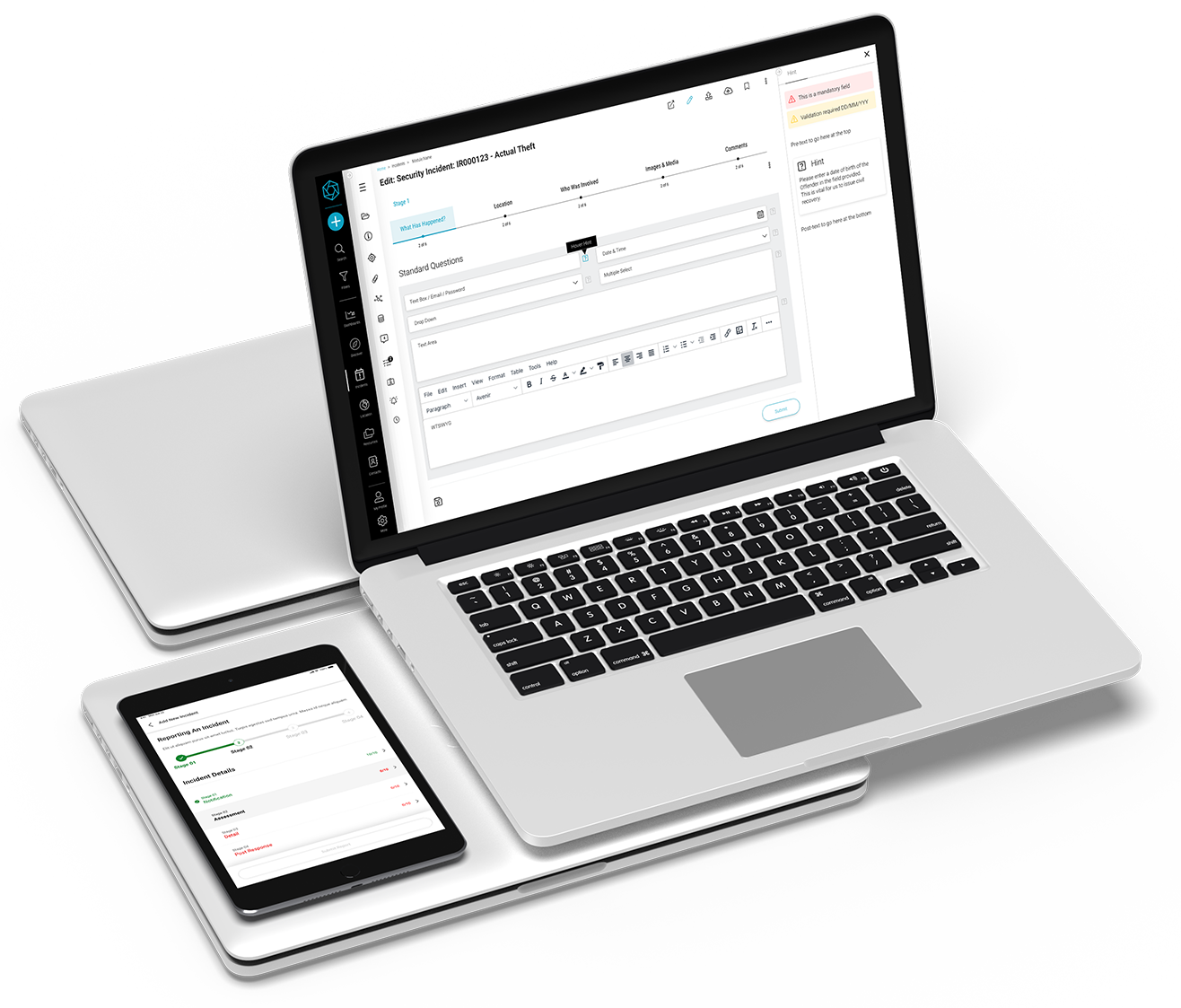Custom incident types refer to the tailored configuration of critical event management platform to suit the specific needs, policies, and procedures of an organisation. This customisation ensures that the process is aligned with the organisation's operational requirements, risk profile, and compliance obligations.
By defining event types that accurately reflect the nature of incidents an organisation faces and the steps required to resolve them, organisations can streamline their response efforts, improve efficiency, and enhance incident resolution outcomes.
Custom Incident Types
Definition: Custom incident types categorise incidents based on their nature, impact, or source, tailored to the organisation's specific operational environment. This categorisation helps in organising, prioritising, and responding to incidents more effectively.
Examples:
- Physical security incidents (e.g., unauthorised access, URBEX, theft)
- Safety incidents (e.g., workplace injury, fire)
- Service disruption incidents (e.g., IT outage, power failure)
- Environmental incidents (e.g., spillage of hazardous materials, pollution)
Benefits:
- Improved Clarity: Helps in quickly identifying the nature of incidents for better clarity among responders.
- Targeted Response: Enables the activation of specific response protocols tailored to the type of incident, improving response effectiveness.
- Enhanced Reporting: Facilitates more accurate incident reporting and analysis by categorising incidents in a manner that aligns with the organisation's operational risks and reporting requirements.
Custom Workflows
Definition: Custom workflows define the sequence of steps, processes, and responsibilities for managing and resolving each type of incident. These workflows are designed to guide responders through the incident management process, from initial detection and reporting through to resolution and review.
Examples:
- Initial Assessment: Determining the severity and impact of the incident.
- Notification: Informing relevant stakeholders and responders about the incident.
- Containment: Steps to limit the impact of the incident.
- Investigation and Analysis: Gathering facts and analysing the incident to identify the cause and impact.
- Resolution and Recovery: Actions taken to resolve the incident and restore normal operations.
- Post-Incident Review: Analysing the incident and response to identify lessons learned and improve future incident response efforts.
Benefits:
- Consistency: Ensures a consistent approach to handling different types of incidents, reducing variability in response quality.
- Efficiency: Streamlines the incident response process, enabling quicker and more coordinated actions that can reduce the overall impact of incidents.
- Accountability: Clearly defines roles and responsibilities, ensuring that all involved parties know what is expected of them during incident response.
- Continuous Improvement: Facilitates post-incident reviews and feedback loops to refine workflows, improve response strategies, and enhance preparedness for future incidents.
Implementing custom incident types and workflows requires a thorough understanding of the organization's unique operational context, risks, and compliance requirements. It often involves collaboration across departments to ensure that the configurations accurately reflect the needs and capabilities of the organization. Additionally, training and awareness efforts are essential to ensure that all personnel understand how to operate within the defined incident management framework.
Iconic & tall buildings
Real estate portfolios
Venues & events
Studios & entertainment
Retail stores & supply chain
Critical national infrastructure
Security & FM service providers
Emergency responders







 +44 (0)1604 598989
+44 (0)1604 598989